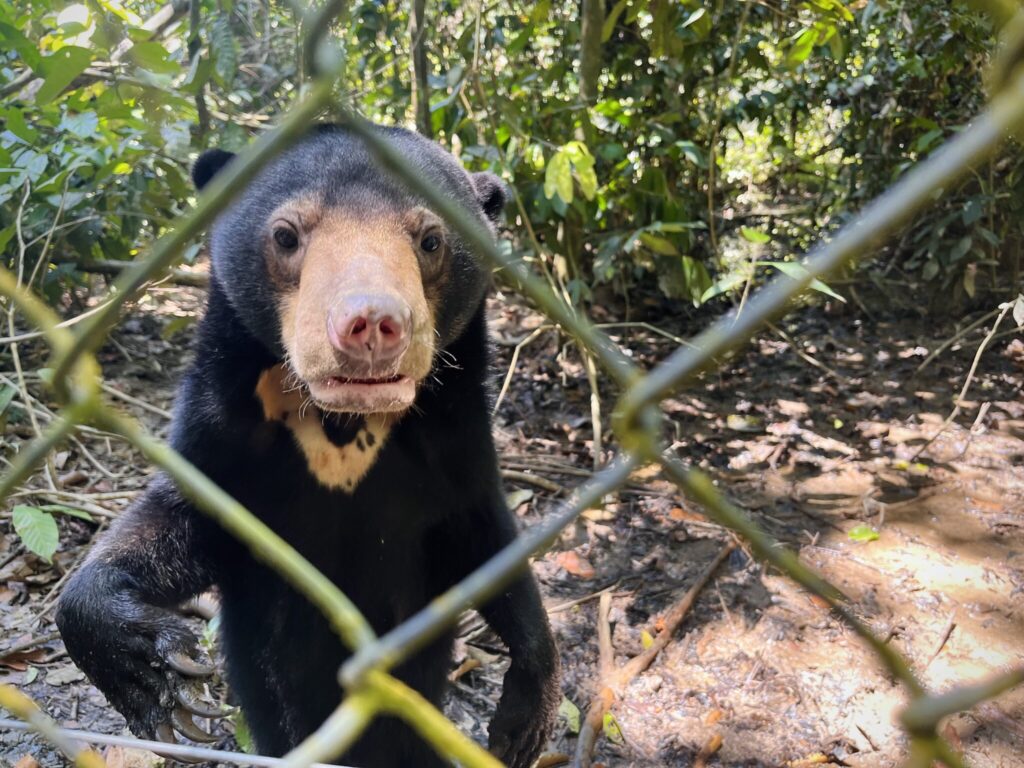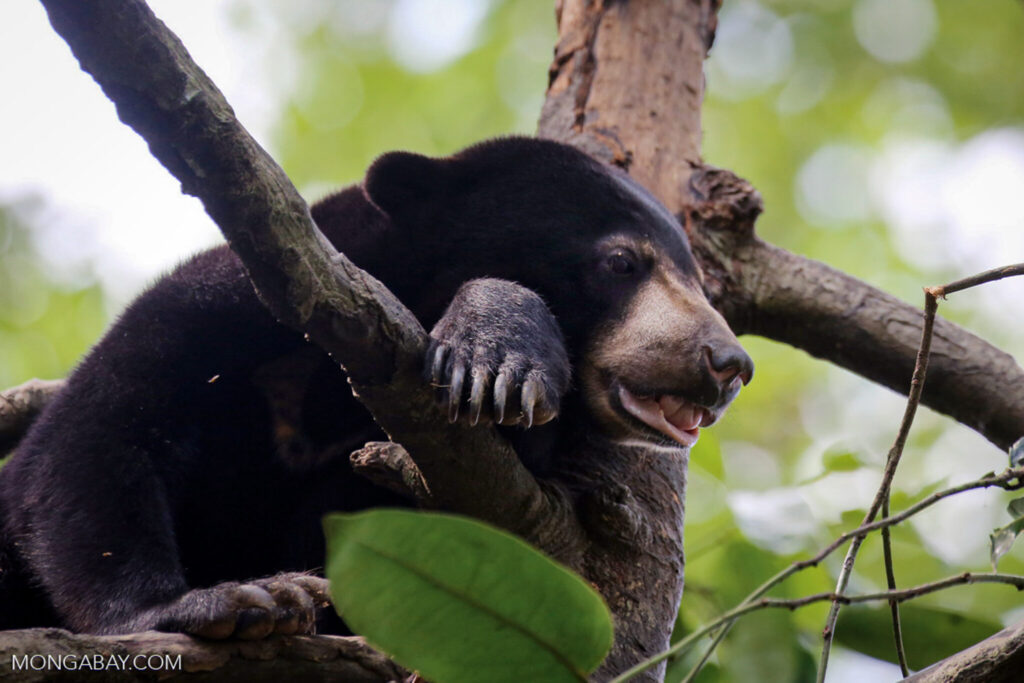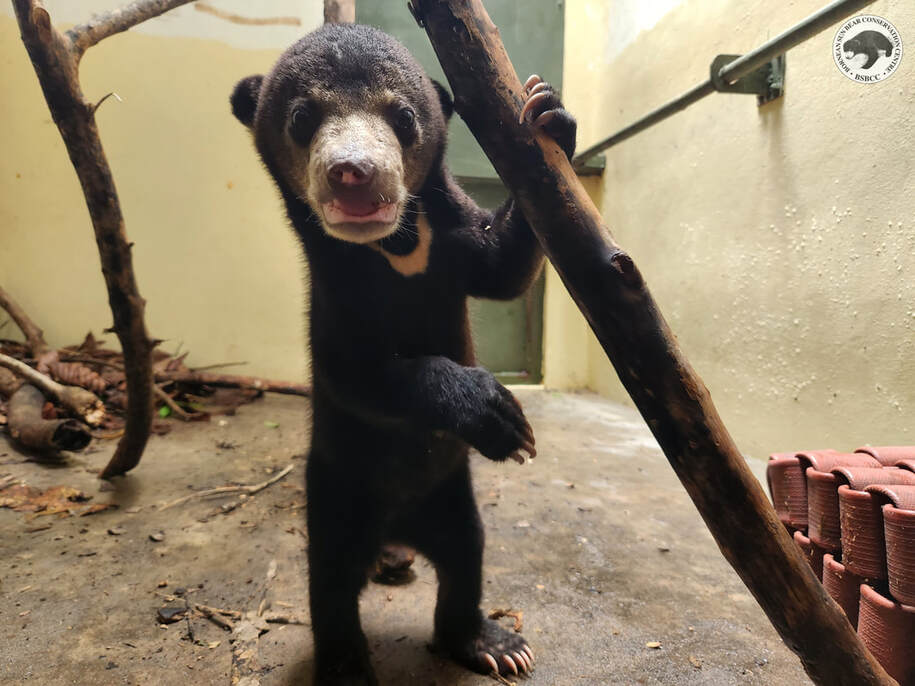In the heart of Malaysian Borneo, sun bears, vital to tropical forests, face a perilous existence. A rehabilitation program in Sabah rescues 44 bears from captivity, aiming to release them since 2015. However, a recent study reveals a stark reality: only half may survive in the wild.
Meet Kipaku, a 3-year-old sun bear at the Bornean Sun Bear Conservation Centre. Orphaned by poachers, his self-soothing behavior reflects the trauma of losing his mother. Similar stories resonate among the 44 bears under care.
Despite releasing 12 bears into Sabah’s reserves, the center grapples with the challenges of ensuring their survival. The call for a holistic approach grows louder, emphasizing the need to prevent poaching from the outset. Experts advocate for ecotourism to support local communities, fostering coexistence and reducing the reliance on harmful practices.
The Bornean Sun Bear Conservation Centre stands as a sanctuary, not just for bears, but as a symbol of resilience. Kipaku’s gaze, though shadowed by sorrow, holds a spark of hope, reminding us that every conservation story has the potential to evolve into a triumph.

Sun bears, known for their equatorial presence, are facing an alarming threat of extinction. Listed as vulnerable on the IUCN Red List, their habitat loss, poaching, and indiscriminate snaring persist across their range from Bangladesh to southwest China, down to Peninsular Malaysia, and the islands of Borneo and Sumatra.
Despite strict protection in Malaysia since 1997, wild sun bears in Sabah, Borneo, are still poached for gallbladders and traditional medicines. Habitat loss compounds the issue, with Sabah losing extensive forest cover to logging and oil palm plantations. Between 2002 and 2022, 385,000 hectares of primary forest vanished, exposing bear habitats to hunters.
In this dire scenario, the Bornean Sun Bear Conservation Centre (BSBCC) witnesses a distressing influx of three to five wild-born sun bear cubs annually, highlighting a concerning rate of loss. Siew Te Wong, BSBCC’s founder, emphasizes the gravity, noting that for every cub in the pet trade, both the mother and cub are removed from the ecosystem, often through lethal means like snares and poaching.
The steps to the bear house at BSBCC echo with urgency, symbolizing a race against time to protect these unique creatures from disappearing in the wild.


Inside the bear house, a bustling kitchen caters to the nutritional needs of 44 resident bears in the heart of a 2.5-hectare natural rainforest enclosure.
For these bears, it’s a return to their natural habitat after being snatched from the wild at infancy. Towering Shorea trees and lush vegetation provide the backdrop for them to hone wild skills like foraging and climbing.
The forest enclosures offer a glimpse into the bears’ instincts and adaptation. Favorites like tree fruits and honey from stingless beehives prompt the bears to master the art of climbing, a vital survival skill. Romolina, a female bear, exemplifies this as she gracefully descends from her lofty nest, created for shelter from forest floor parasites.
Yet, despite their wilderness prowess, some bears, like Romolina, are unable to return to the wild due to their habituation to humans. The delicate balance between nurturing wild instincts and ensuring the safety of these majestic creatures unfolds in the heart of the rainforest sanctuary.

The criteria for releasing bears into the wild hinge on three vital factors: climbing proficiency, adept foraging skills, and a natural aversion to people. The last criterion is crucial to prevent conflicts, especially near oil palm plantations, which bears are naturally drawn to due to the abundance of high-energy fruit.
When cubs access forest enclosures, their instincts kick in as they forage for termites and develop climbing abilities. However, bears arriving as adults, having grown up in captivity, face a bleak reality. Wong highlights the challenge: “Those instincts just disappear. None of the bears that come to us as full-grown adults can be released; they lack the skills to survive in the forest, and it’s too late for them to learn. So, the hope is on the cubs.”

The sun bears, with their instinctive foraging activities, play a crucial role as “forest doctors” in their ecosystem. By consuming fruits, dispersing tree seeds, and controlling pests like termites, they contribute significantly to the health of the forest. Despite being the smallest of the world’s eight bear species, sun bears have outsized effects on their environment.
In the veterinary surgery shared with the Sepilok Orangutan Rehabilitation Centre, a young bear named Itam is fitted with a radio collar—a promising candidate for release due to her ability to forage, climb trees, and avoid human contact. The meticulous procedure, involving scrupulous measurements and vital sign checks, aims to track her movements and assess her readiness for release.
For bears like Itam, the ultimate goal is release into the wild. Wong recounts the bittersweet moment when the metal gate of the transportation crate opens, and the bear swiftly disappears into the forest—a culmination of five years of rehabilitation and care. Wong expresses relief but acknowledges the uncertainties in the wild, emphasizing the challenges even for a wild sun bear navigating the forest alone.
A recent study by the BSBCC, in collaboration with researchers, delved into the fate of the 12 released bears. While the details remain challenging due to GPS malfunctions and inaccessible terrain, evidence suggests that as few as half of the released bears may still be alive. The release moment is a mix of relief and worry, underscoring the unpredictable journey these rehabilitated bears face in the wild.

The future of released sun bears is uncertain, with six bears’ radio collars emitting a potential mortality signal. While two bear bodies were found, the fate of the other four remains unknown, highlighting challenges in their adaptation to the wild. The confirmed deaths were attributed to starvation and fatal confrontations with resident bears.
Similar challenges in sun bear release programs elsewhere, like in Cambodia, emphasize the importance of learning from these experiences. Released bears faced snares and conflicts with resident bears, prompting the need for a thoughtful approach. Wong and his team suggest a “soft release” strategy, providing rewilded bears with initial food and care in the wild. They stress the importance of understanding existing wild bear populations to minimize conflicts between released and resident bears.
Wong acknowledges the exhaustive efforts involved in release operations, questioning their worth amid low survival odds. However, as a wildlife biologist, he maintains that bears belong in the wild. The mixed success prompts a call for alternative conservation measures, prioritizing the prevention of wild sun bear declines.
The study advocates a holistic approach, urging forest protection, community education, and livelihood development to deter poaching. Strengthening law enforcement and engaging everyone, from local communities to government bodies, is deemed essential. The ultimate goal: prevent bear poaching at its roots and secure the coexistence of sun bears and humans in the wild. The study underscores the importance of a collective effort to conserve wildlife, involving everyone from rural communities to government officials.

Ensuring a delicate balance between meeting human needs and wildlife conservation proves to be a formidable challenge in Sabah, a challenge that Wong emphasizes. While education and law enforcement play pivotal roles in diminishing wildlife threats, the linchpin solution resides in bolstering local livelihoods through ecotourism. This multifaceted approach not only amplifies awareness about conservation but also provides communities with a sustainable income intricately tied to the protection of crucial ecosystems.
Sabah found itself entwined in the intricate dance between livelihoods and conservation during the lockdowns imposed by the COVID-19 pandemic. The abrupt cessation of tourism amplified the local reliance on forest resources, resulting in a noticeable upswing in the need for bear rescues. Wong underscores the urgency of thwarting poaching by uplifting people’s livelihoods, emphasizing a strategic shift away from merely expanding rescue facilities.
Wong’s perspective aligns harmoniously with other conservation groups in Sabah, such as HUTAN, a proactive force dedicated to assisting rural communities in cultivating sustainable incomes from ecotourism. Marc Ancrenaz, the scientific director of HUTAN, underscores how improved livelihoods alleviate pressure on natural resources, translating into reduced hunting and poaching.
Despite the challenges, Wong remains unwaveringly inspired by nature’s resilience and advocates for collaborative efforts with people. The holistic approach, though undoubtedly challenging, is deemed indispensable. Wong’s optimism radiates as he firmly believes that with unwavering persistence and a positive mindset, the loftiest conservation goals can indeed be achieved.
Within the confines of the rescue center, the arrival of a tiny 3-month-old cub named Tenom serves as a poignant reminder of the persisting need for bear rescues. Discovered as an orphaned cub in a village market, Tenom’s journey echoes the experiences of numerous other rescued bears. While the certainty of her potential for release remains shrouded in uncertainty, one undeniable truth emerges—Tenom is but a representative of the ongoing stream of bear cubs in dire need of rescue in the foreseeable future.

